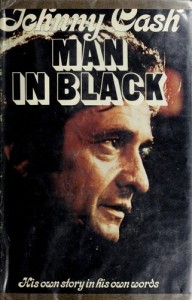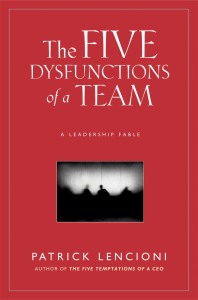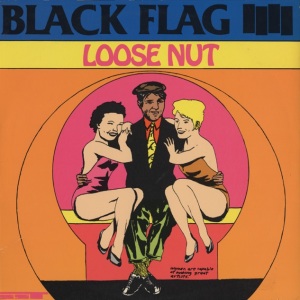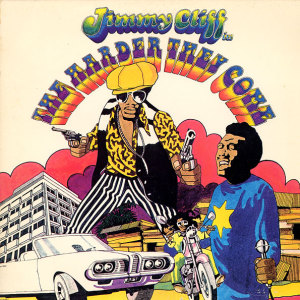
Patrick Lencioni – The Five Dysfunctions of a Team: A Leadership Fable (Jossey-Bass 2002)
Patrick Lencioni is a business consultant guru and he has written a number of books on business management. The Five Dysfunctions of a Team is a sort of self-help book, with a separate workbook, DVD and facilitator’s “field guide” available to accompany it for implementation in actual businesses. It is written in two parts. The first is the “fable”, an entirely fictional story of a group of executives at a start-up software company that just demoted its previous CEO and appointed a new one. The second, much shorter part of the book is an explanation of the author’s theory that there are five dysfunctions of a team, as were purportedly illustrated in the preceding fictional story. The second part of the book also provides brief (one paragraph) suggestions for how to redress each dysfunction.
The book is absolute rubbish — let’s make that clear from the outset. It provides absolutely no justification or empirical evidence for any of the its assertions, and the fictional story is so poorly drawn and unrealistic that it has only a negative value for the entire book. Even taken together with the available supplemental materials, the package is really meant to accompany a session with a paid consultant (“facilitator”) who, one hopes, will contribute something useful not found in the book or related written materials.
“Most [books like this] have one simple, enduring message that echoes through the ages: ‘Pay to see me speak at the Ramada’.” (online review)
When someone offers advice on how to avoid the pitfalls of structuring a team, it seems immanently reasonable to demand something more than idle conjecture. Is Mr. Lencioni’s book an attempt to provide an easy-to-grasp narrative illustration of theories that others have empirically tested? No. Does it even fit within a particular school of thought on leadership — generally or at least within a business context? It is hard to say. There is not so much as a bibliography included. No attribution is given to anyone as having originated or at least influenced the concepts discussed in the book. This is problematic, to say the least.
“How does Patrick Lencioni know there are five dysfunctions and not three or seven? Answer – he uses his own experience, and nothing more.
“What research does he cite in support of his thesis that the most important dysfunction is an ‘abs[]ence of trust.’? The answer is none.
“I could continue but sympathetic readers will understand my point. This is yet another anecdotal, pseudo-scientific business book, of questionable accuracy and limited use.” (bookstore customer review)
No doubt, it would be easier to swallow some of the advice contained in the book as “common sense” or some such thing if the “fable” part of the book had even a whiff of believability. Sadly, no.
“One of the main characters in the case (Kathryn) would rarely be hired into a mid-size company. There is no chance that her resume would hit the desk of a multinational corporation. Climbing through the ranks with Kathryn’s credentials is fiction. The author tends to suggest that an extremely uncommon event (that is, retaining an executive with Kathryn’s inexperience and lack of academic pedigree) has some relevance into corporate management at the executive level. It does not. Someone of her caliber may come into the company as a Manager, Director or other middle management hire – but not the lead executive. No way!” (bookstore customer review)
So, the new CEO (Kathryn) sets up the premise of the fable in a totally implausible way. But, setting that aside, what about her interactions with the other executives?
“The huge egos of company vice presidents crumble under the matronly 7th grade teacher whose husband is a high school basketball coach. Characters are unrealistic and you can’t help but want their company to fail so they find themselves selling Starbucks lattes for a living.” (bookstore customer review)
While the comment immediately above smacks of misogyny — the corporate world needs more “matronly” attitudes as desperately as anything else — and hints at social ostracism based on background — does the occupation of an employee’s spouse really matter to his or her job competence? — the problem with Lencioni’s narrative is that the almost uniformly hard-nosed attitude of most higher-level executives would never let them “crumble” as they do in this fictional account. The fact that the characters do crumble is revealing about what this book is really about, and why it is so popular — and it is immensely popular. Here we start to get to the crux of the problem with this book: its ideology. One “exposé” of business management gurus had this to say:
“Much of management theory today is in fact the consecration of class interest—not of the capitalist class, nor of labor, but of a new social group: the management class. *** [A]ll economic organizations involve at least some degree of power, and power always pisses people off.” The Management Myth
So, this looks like a book that is nothing more than a weapon of choice for CEOs or other management trying to reinforce a hierarchy of power within a company.
“This book was completely absurd. It was written to sell and tells CEO’s exactly what they want to hear — that their managers are paranoid children who cannot behave like adults and must be spanked into submission, (though he offers absolutely NO solutions on how to do this).” (bookstore customer review)
Many bookstore customer reviews sharply criticize this book as pushing a “socialist” idea of teams, perhaps also asserting that the supposed benefits of collaboration is empirically false. There is a documentary called The Pervert’s Guide to Ideology (2013) in which old Soviet film is discussed and compared to the 1956 Hungarian uprising against Soviet rule, which was dismissed by Soviet leadership as a few troublemaking individuals not representative of The People — the mythic force of historical necessity used to give the leadership credibility. There is an analogy here. This seems precisely to be what Mr. Lencioni is doing with The Five Dysfunctions of a Team. There is this mythical notion of an Effective Team, which is never really delineated — this book focuses only the supposed dysfunctions without really ever setting forth what an effective, non-dysfunctional team would look like or what ends they pursue. The only thing we are left with at the end of the book is a reassertion of the control of the CEO. Whether the company actually succeeds once the CEO has control of the team is not really part of the book, which, lest we forget, is justified only by pure fiction. This is not “socialist” but authoritarian (that documentary illustrates how the same ideologies show up across the political spectrum, used by communists, fascists and capitalists alike). Really, if this book were “socialist” (it manifestly is NOT), or even if it really took seriously the democratic implications of teamwork, why is it all about executives operating off on their own without input from rank-and-file employees? This is the major fault of the book. It stresses teamwork, but only within certain unquestioned boundaries, all the while offering a stern lecture about how everything, boundaries and all, need to be discussed. This is a profound hypocrisy.
Anyway, the criticism of Lencioni’s advocacy of “teamwork” rests on two key points. One is that working collectively on a “team” is more effective than working individually or competitively. This is an empirical point. Lencioni does not address it. The other is that there is an agreed upon way to measure success that allows such an assessment of effectiveness. Stock price? Err, does anyone really believe the “efficient market hypothesis” that stock price actually tracks the “real” value to a company anymore? Stock price aside, this latter issue really gets to the crux of the problem with Lencioni’s book. What it obfuscates is the question of power. Who gets to decide the metrics that matter to a business? After all, accountability (“avoidance of accountability” is one of his “dysfunctions”) presupposes a format for measurement. Lencioni’s theory rests on a curious definition of teamwork. That is, it is a non-democratic form of teamwork. The CEO decides the metrics. Period. If a CEO has bad ideas, perhaps a “coup” of sorts by other, lower-level executives to mire the leadership in circular infighting has a benefit to the company, by preventing the implementation of idiotic plans from an incompetent CEO that the other executives have no power to remove — making them somewhat like Bartleby, the Scrivener. Here, Lencioni’s “fable” gives the company’s board, which fired the previous CEO and hired the new one, a complete pass. Their decision is non-reviewable. But shouldn’t accountability flow up to them too? Oh, wait, accountability in this model implicitly flows, like shit, only downhill.
In a business context, there is always a default to saying that profits matter. But, of course, Lencioni’s book doesn’t provide data like that as a judge of success — not that any such data in a fictional story would have any persuasive value whatsoever. And yet, there are other intra-company dynamics at work too. Why does anyone care about profits? Why should anyone subordinate their personal interests for the pursuit of profits for someone else? Lencioni offers a very naïve analysis — really a dismissal — of these things. Yet sociologists like Pierre Bourdieu have documented such fields of struggles (The Social Structures of the Economy) in a way much more compelling than what is offered here. This also fits squarely within the theory of historian Alfred Chandler, Jr., whose The Visible Hand: The Managerial Revolution in American Business won many awards on its release for its delineation of how business management behaves like a distinct “class” acting in its own interests quite apart from concerns of shareholders or even for long-term profitability of the firm (really an older idea that comes from the likes of Adolph A. Berle if not earlier, and was later backed up by an investigation by Edward S. Herman). What is difficult to swallow is that the sorts of theories like Lencioni’s look like attempts to justify inequality (here, of power) on the basis of meritocracy, something that at least one observer has noted “conveniently places management consultants … at the very pinnacle of the new order.”
Most executives enter business and go into management for social status, either due to the prestige of their position and the power that it offers, or as a byproduct through the salary or wages it provides. Lencioni’s narrative would have us believe that such an executive would demote himself for the betterment of the team! Historians and sociologists have developed considerable evidence that suggests this is quite unlikely.
There are some vague hints at useful concepts implied here. For instance, the idea that people in business try to save face is an interesting concept. It is not discussed in any detail though. Other consultants have brought up that point too, though many also flounder when it comes to offering any actionable advice around it.
Lencioni does suggest that a significant problem teams face is that the people involved won’t discuss real issues. Anyone who has worked in a corporate setting will immediately appreciate this problem. Lencioni is by no means the only person who has made this point. But he offers very little in the way of techniques to uncover subtle obfuscation of the “real” issues in business settings, and in some ways perhaps distracts from such insights. And his suggestions to overcome this fall very flat. In this book, his suggestions are so limited to be almost non-existent. More is provided in the DVD and workbook — oh, did you buy those too?
Lencioni’s accompanying workbook includes a bunch of silly exercises that try to build “trust” by encouraging executives/management to reveal personal details of their life to build trust in a work setting. This approach could easily be empirically tested. Like everything else in this book, it isn’t. It is also a dubious proposition just on a theoretical level. It seems reasonable to think that people may trust each other as friends, on a personal level, and still not trust each other in work-related capacities, or vice-versa. If this is not a fair belief, it could be empirically disproved, but you would need to look elsewhere than a Lencioni book.
One prescient comment from an online review is that this book tends to be trotted out by corporate “leaders” who themselves are the major problem in an executive “team” using the book to insist that the problem is everyone else:
“The real truth in our case — the poobah who is making us read this book is the dysfunction of our group. This person has a physical ailment that causes emotional instability — but is too high up the ladder for anyone complain about without being fired. Now we have this book to tell us how it’s actually our fault for not being a good enough team.” (bookstore customer review)
A much better way to look at problems in business settings is simply to ask the question that Roman censor Lucius Cassius used to ask (this analysis was cited approvingly by Cicero), “Cui bono?” (“to whose benefit?”). Is management simply reasserting its power over other employees in a company? Is that the ultimate object of improving “teamwork”? Are executives simply re-positioning themselves relative to each other, or relative to other firms, in a hierarchy of social status? Also, as Lencioni does eventually mention, there are tools from psychology that can help mediate purely interpersonal interactions. Of course, Lencioni only mentions this stuff on psychology in passing, and without any citation to even a single resource. You would need to look elsewhere on your own for any useful information in that regard. But, purely within a “leadership team” setting, Lucius Cassius’ question tends to rise above all others. Most executives are smart and/or educated enough to not be put off by minor frictions between different personality types, though most executives are also so motivated by status that they constantly reinforce — consciously or unconsciously — the reproduction of certain habits of thought and hierarchies of power and prestige.
“Seriously, if your boss is making you read this, it’s already too late.” (online review)
Indeed. If you work at a company where the management believes this book to be useful, you should start looking for other employment immediately. Sadly, though, it might be hard to find anything outside this paradigm.










